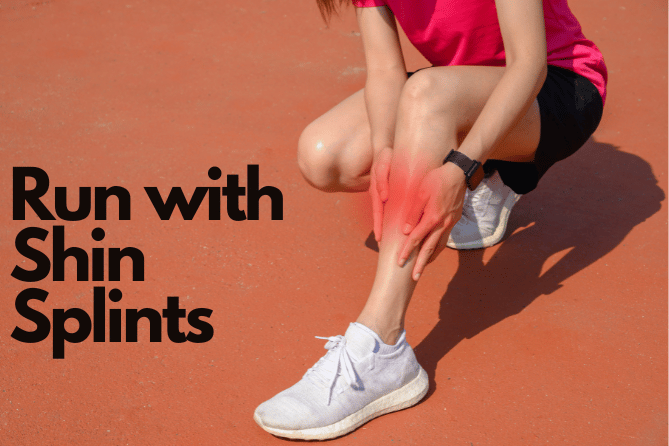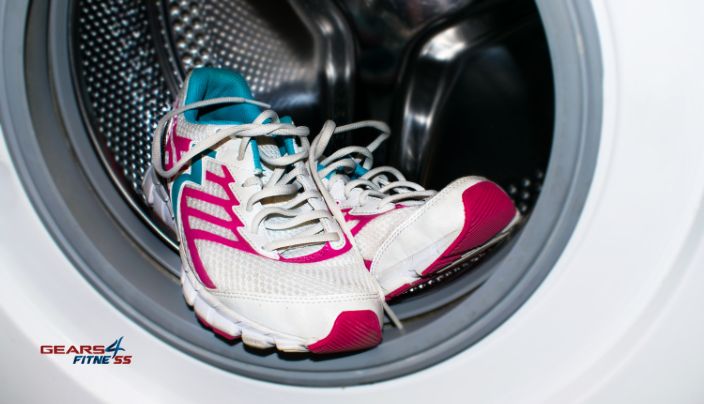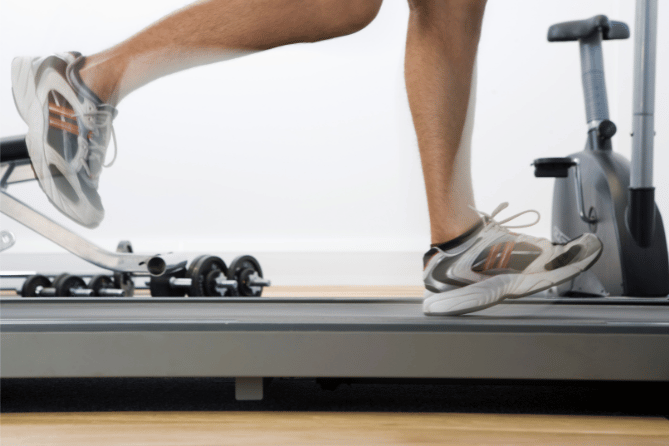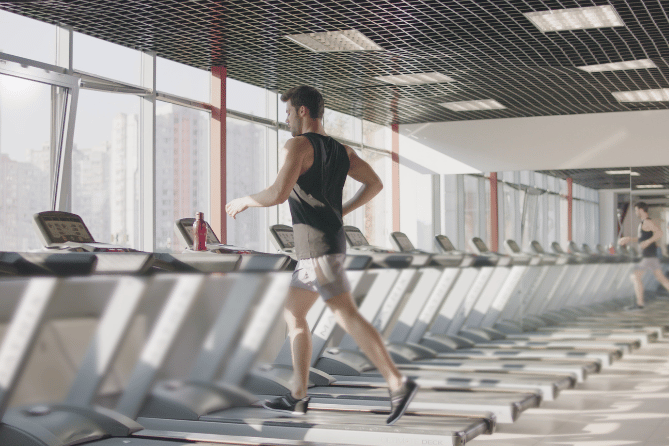Shin splints are a very common physical problem that generates pain on the front side of the lower leg. Mostly it happens due to the inflammation of bone tissues, tendons, and muscles close to your shin bone. People from different backgrounds face shin splints.
Because of this problem, you can’t just stop and refrain from all activities. Doing proper stretch, increasing leg muscles, reducing hardcore training, running on a soft surface, correcting running technique, wearing proper shoes, and applying ice will help you to run with shin spints.
Here I am going to explain those to you. So let’s have a look at how to run with shin splints.
How to run with shin splints: In-depth Guideline
After finding out shin splints it’s not a very good thing to continue your workout or training session. It would be best to take a temporary break from the workout. But if you are determined to persist in your training then you can follow some specific steps which might pose less damage to your shin bone thus limiting the pain of shin splints.
Wrapping your leg
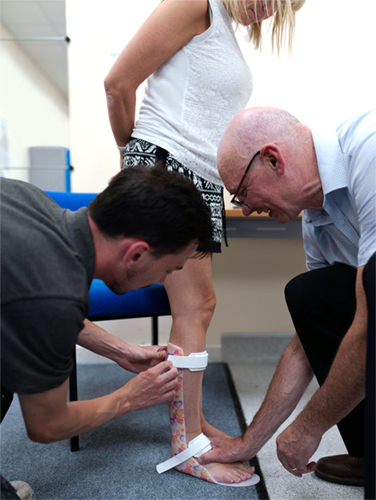
Every time you think of running you can wrap your leg with Large Size bandage or tape. You can wrap up the whole shin bone area. It would help to decrease the pain. Please note that by wrapping your shin bone you are not curing shin splints. It’s just a way to create a little bit of resistance to the overall force that is transferred into your shin bone.
Adding Cross-Training
This is one of the best ways that would help you to limit the stress in your shin. Exercise like swimming and bicycling has very limited stress on your leg which ensure the overall safety of shin bone.
Avoid training on Hard Surface
A hard surface and a soft surface will make a huge difference in your daily workout. A soft surface will drastically reduce the stress on your leg. Helping you to continue your training session with a minimal amount of pain. A soft surface like grass, sand, synthetic tracks is the optimum choice for your exercise. Bones, muscles, joints, tendons, and tissues will absorb less amount of shock leading to less risk of shin splints.
Wearing Athlete Shoes
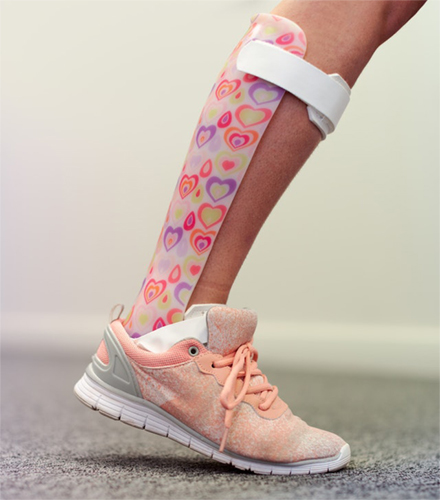
It would be best to wear running shoes after consulting with a physical therapist. It might be a bit time-consuming but trust me it will help you in the long run. Being said that you also need to change your shoes for getting the optimum benefit for the protection from shin splints.
Don’t run on hills
Though it’s fun to run in the hilly area it gives a sense of reenergizing but running with a shin splint might make the scenario look like the opposite. Usually, hill tracks are uneven and when you are going from the upper hill to the lower hill then you need to do a lot of sudden breaks because of the snaky track. As a result, your shin bone has to absorb much more pressure compared to running on a flat road. Running on a flat track or surface will reduce the probability of pain of shin splints.
Limit your workout
As you have the problem of shin splints your plan should be made in such a way that does not cause much stress on your leg in a very short period. You can increase the break between your workout and decrease the overall laps, reps, or set. By doing this you can do a smooth session which will generate less amount of soreness, pain, and inflammation in your shin bone area.
Avoid Explosive Sharp Movements
Simply don’t do any kind of sharp movement like sudden stop, sudden jump, sudden landing, and sudden turning. These types of movements will be pounding your shin bone with a lot of force.
Never skip a warm-up session
A warm-up session will make your shin bone prepared for the exercise and complex movements. Try to do stretching in the proper way that will also loosen up the tightness of your overall leg muscle like calf, hamstring, and glutes. It will help you to run more efficiently and safely.
Use Ice to reduce swelling and pain
Ice is indeed a very good option to reduce the swelling of the tibialis anterior muscle. After every training session putting some ice on the shin bone will give you a huge amount of relief if you feel any pain.
Proper Diet
You should include 1200+ milligrams of Calcium and 350+milligrams of Vitamin regularly. Try to get this by consuming organic milk and freshly made yogurt from the best farmhouse near your home. It will supply the proper nutrients for the overall health of shin bone thus reducing the chance of shin splints.
What are the symptoms of shin splints?
It’s not very complex to find out whether you have shin splints or not. Any kind of soreness, sharp pain around the inner shin bone area after running, jogging or another exercise indicates that you may have shin splints. If you notice after taking rest for a while the pain goes away which is also a symptom of shin splints.
What causes shin splints?
If you don’t know what causes a problem then it’s quite impossible to skip that problem. So it’s crucial to know the inside story of the surface problem. There are several causes behind shin splints. These are following
Imbalance
If you feel that you are feeling pain in one leg then it means that you are having a lack of balance. It might be due to any underlying problems of hip adjustment or lower back problems. When you continue to run or exercise with your dominant leg there remains a chance of overstressing the muscle of that leg. On top of that if you have weak glute muscles then it will add more stress on your shin bone while running. Weak ankles and weak core muscles are also responsible for imbalance which eventually leads to shin splints.
Overpronation
Pronation is a natural thing that every human being does when they walk or run. It takes the stress, reduces and absorbs shocks. When you are running or jogging your weight shifts from the heel to the front. This is normal. But overpronation might occur if you have a flat foot. It increases the overall stress on the shinbone.
Excessive Training
It is also one of the main reasons for shin splints. A sudden increase in training will generate a lot of load on the tibial muscle which causes shin pain. It’s better to start and increase your training percentage slowly and steadily.
Unsuitable running shoes
Many people simply avoid buying a new shoe for running after a few hundreds of miles and thus end up having shin splints. If you don’t buy the perfect running shoe for your foot shape then shin splints will most probably occur. A worn-out shoe and wrong footwear is a big player for shin splints.
Training on a hard surface
When you are used to training on a hard concrete surface it increases the amount of stress on your bones and muscles. Because bones and muscles are made in such a way that it absorbs the forces while you are using your leg for running or other activities. Ultimately all this force causes the muscle to be fatigued and overused, thus causing shin splints.
Wrong technique while training
A proper exercise requires a proper posture and position. Often people skip this simple thing and end up having serious or medium-level shin pain. If you don’t follow the proper guideline of the exercise from any professionals or fitness instructor then you might be doing many exercises using the wrong technique which will cause you to have shin splints. Simply saying improper running, jumping, the landing will have some major impact on your shinbone and adjacent areas.
Overweight
If you are overweight and obese person and you are following a workout routine which is for a fit and healthy body weight person then you may end up having to hurt your shins. A continuous overstressing of the leg muscle will damage the shinbone badly and can lead to shin splints.
Weak Calf Muscles
Small size and weak calf muscle can be responsible for shin splints. Small calf muscle can’t absorb the impact of forces fully so the load falls upon the tibia which causes shin splints.
When to stop and call the doctor?
There is a certain limit up to which you can continue. But don’t take it more than your capability. A red line is always there and you should be aware of that boundary for your overall health. Here in short I will tell you the signs which indicate and demand immediate medical attention. These are following
- If you notice that applying ice and taking rest for a while is not able to stop the pain then it’s a red signal for you.
- The swelling of the leg is increasing without any sign of stopping is another signal to stop your training session.
- Extreme pain in the shin bone is also a bad sign and need a quick checkup and x-ray to make sure of any fracture in the shin bone.
Conclusion
Shinbone injury may seem like a little deal but it would be wise to keep in mind that it’s one of the major weight-carrying bones of your body. A major blow and injury to this bone can be painful for all the life ahead.
When you exercise please be cautious and alert about the shin splints. I would recommend you to take a 3-4 weeks gap for rest then you can continue. I expect that all these steps and don’t do stuff may give you a little bit of understanding of how to run with shin splints.

